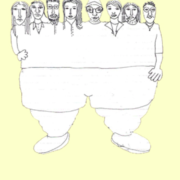Introduction, “Adult in the childs and adolescents group”
The aim that we have set ourselves in this issue is to bring forward the different characteristics that exist in the relation between children and adults, and adolescents and adults in therapeutic groups. The first article by Marco Bernabei deals with the different positions of the adult, and the relation with him, in the two types of groups, showing how in children’s groups a co-construction of a third adult object takes place by the members and the therapist. Pierre Privat focuses attention on the first siction of a group of children and their relation with the adult. Dominique Quelin poses the question on what place the adult therapist hold in a world of adolescents and their parents. Also Velia Bianchi Ranci sees the therapist adult searching for a place in groups with children. Angela Baldassare in groups with adolescents retains that the adult was invested with parental functions, revealing inadequateness. Cesare Freddi develops the theme of Read more

